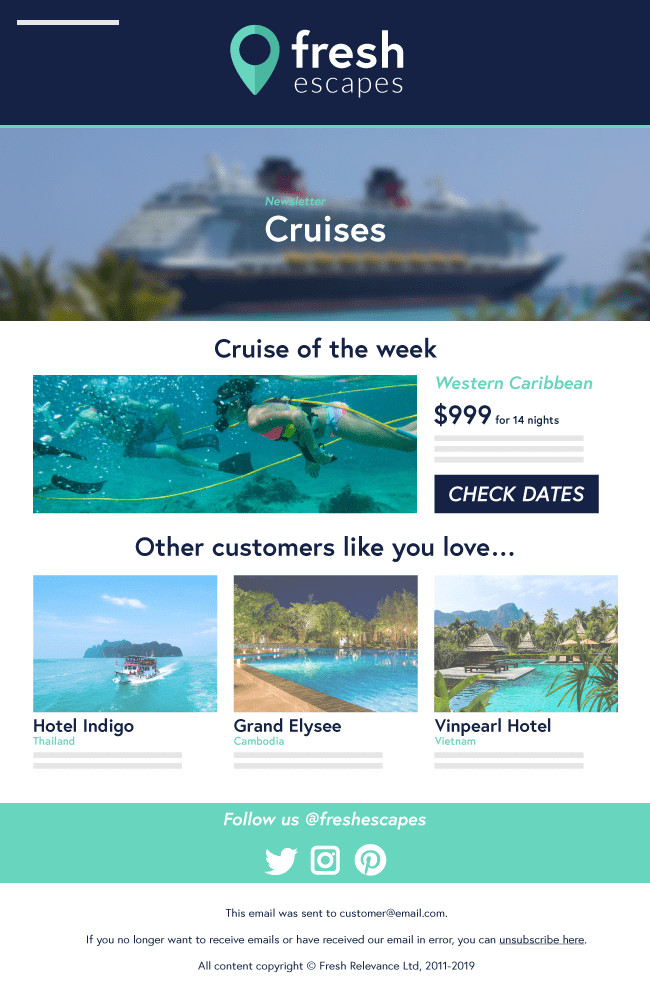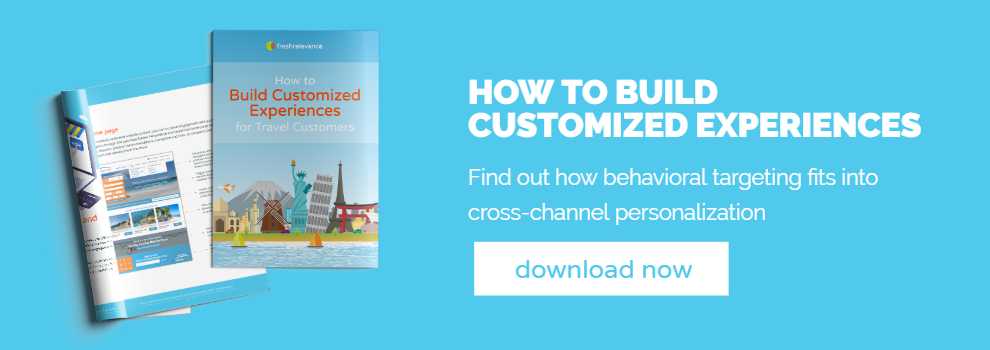Purchasing a holiday often comes with a high price tag, which means customers are likely to undertake a lot of research and need more persuasion. For travel industry businesses to drive bookings, they should be focused on continually building their understanding of what shoppers want and responding to these preferences accordingly.
Travel marketers are in a unique position to have access to a vast amount of customer data, from their favorite destinations and types of vacations to the holiday budget and airport they’re likely to be flying from. For new shoppers who have yet to make their first booking and thus haven’t provided a lot of data yet, leveraging contextual data can be a powerful source of information.
Using the different types of data effectively within digital marketing enables brands in the travel and tourism industry to act like a digital travel agent, serving the right message at the right time at every touchpoint in the customer journey. We’ve put together some easy-to-implement and scalable strategies that travel brands can add to their marketing toolkit to help drive bookings this summer.
The role of behavioral data
In the past, brands could get away with segmenting customers using mainly demographic traits such as age, gender and address. This yielded some positive results but had its limitations as bookers in the same demographic segment could have very different customer preferences.
Behavior-based marketing tactics look more closely at market dynamics and are much more cost-effective and have higher conversion rates than generic or demographic-based campaigns. A shopper’s behavior, such as their actions and inactions, is a clear indicator for their interests and preferences. Leveraging the information that bookers share through their website browsing, email clicks, abandoned and past bookings allows travel brands to build a picture of each customer and to use these insights in how they market to them.
An easy first step for online travel businesses is leveraging booking abandonment data to send triggered recovery emails. If a visitor searches the website for a holiday and specifies dates, or a certain type of holiday and does not make a booking, the relevant information can automatically populate a personalized abandonment email which is sent shortly after the shopper left the site. Receiving a timely email letting them know that the vacation is still available is useful marketing content and a proven revenue driver, as shoppers can simply click on the link to complete their booking without having to complete the search all over again.
Using behavioral targeting
Behavioral targeting coordinates data from across channels to segment customers according to their interests and stage in the customer lifecycle or buying funnel. These segments can be used to deliver highly relevant content to shoppers at the moment they’re most likely to convert. There are many ways segmentation can be used to drive results in practice. Some key audience groups you should be tracking include frequent bookers, lapsed customers and high and low spenders.
Frequent bookers
The history of your frequent bookers indicates that they are probably going to make a repeat purchase, so keep them updated with the latest recommendations, personalized based on their preferences. Don’t be tempted to reach out with discounts, as this will diminish the value of a booking that was likely to be placed anyway.

Personalized product recommendations
Lapsed customers
These are customers who have shopped with you before but haven’t done so in a while. Win back dormant shoppers by reminding them what they like most about your travel company, based on their past behavior. Let them know that you miss them and that they are a valued customer by telling them about new offers they might be interested in.

Tell customers about offers they’re interested in
High and low spenders
You can use historical purchase data to pinpoint customers who are tempted by lower priced items and share holiday packages that have gone on sale, for example. Data from past bookings can also identify customers who tend to spend more than average. Nudge them towards a conversion with recommendations for your higher margin offers for their favorite destinations.

Recommend vacations in the customer’s price range
Leveraging the shopper’s context
The strategic combination of behavioral data with contextual data is the true key to effective travel sector marketing. Contextual data includes all real-time information gathered about customers at the moment they are interacting with your website or email. Information such as the shopper’s location, weather, device and the time of the day when they’re opening an email or visiting a website offers opportunities to determine which content is presented to the shopper on each channel.
Using dynamic content that updates at the moment of engagement, you could base your offers on the customer’s nearest airport, for example showing shoppers who engage with your marketing content in London the best holiday deals from Heathrow Airport. Using weather forecast-based content can be another way to convert browsers into bookers, for example by promoting beach holidays and depicting sunny scenes when it’s raining at the shopper’s location.
Tailoring your marketing to each customer is no longer optional, it’s paramount to effectively engaging consumers and standing out from the crowd. In implementing the tactics outlined above, businesses will be able to deliver the relevant experience that customers expect, and ultimately encourage them to book their next holiday at a travel destination you offer.
Article originally published on Travolution







